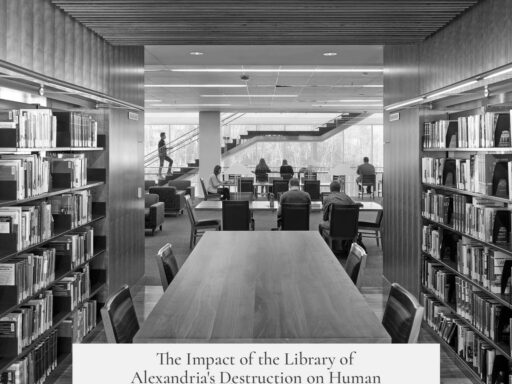The Sphinx and the Great Pyramid are not exactly the same age but date from roughly the same period in ancient Egyptian history. Scholarly consensus places their construction within the Old Kingdom’s Fourth Dynasty, around 4,500 years ago.

The Great Pyramid, built as the tomb of Pharaoh Khufu, dates to about 2580–2560 BCE. It stands as one of the oldest and largest pyramids in Egypt. The Sphinx, a limestone statue with a lion’s body and human head, most likely represents Pharaoh Khafre, Khufu’s successor. It dates to approximately 2558–2532 BCE.
Experts widely agree the Sphinx and the Great Pyramid were built within a few decades of each other, illustrating a continuous effort in monumental architecture during this dynasty. The Sphinx’s style, quarry marks, and location in the Giza complex support this dating.

Some alternative theories suggest the Sphinx could be much older, predating the pyramids. These ideas mainly arise from observations of weathering patterns on the Sphinx that some interpret as water erosion. However, these theories face skepticism from mainstream Egyptologists and geologists, who argue the evidence better fits the traditional timeline.
On /r/AskHistorians, detailed discussions address these alternative views but emphasize their speculative nature and lack of solid archaeological proof. The community underlines the importance of peer-reviewed research and historical records that place both structures in the Fourth Dynasty.

- Great Pyramid built circa 2580–2560 BCE under Pharaoh Khufu.
- Sphinx likely carved during Pharaoh Khafre’s reign, around 2558–2532 BCE.
- Both monuments are part of the Giza Plateau and reflect close historical periods.
- Alternative theories of an older Sphinx lack strong scientific support.
- Scholarly consensus favors near-contemporaneous construction within the Fourth Dynasty.
The close dating highlights the architectural and cultural advancements of the Old Kingdom. Both monuments symbolize Egypt’s power and religious beliefs during that era. Their proximity and style confirm a coordinated building effort rather than separated timelines.
Are the Sphinx and the Great Pyramid the Same Age? Let’s Dig In

In brief: Yes, the Great Sphinx and the Great Pyramid at Giza are generally considered to be roughly the same age. But history isn’t always as straightforward as a ruler measuring stones. These iconic monuments fuel debates hotter than the Egyptian sun about their origins and timelines. You might wonder, is the Sphinx really that old, or did it stroll out of some earlier era?
Let’s unravel the story with a dash of humor, some sharp facts, and clear explanations. What better way to spend a few minutes than pondering ancient mysteries?

The Question’s Background: Why Are We Asking?
The age comparison between these two giants isn’t just idle curiosity. It’s a hot topic on forums like /r/AskHistorians, where enthusiasts insist on thorough research over “wild guesses.” The question keeps popping up because the Sphinx’s weathering, style, and lore sometimes suggest it might be older than traditionally believed. This leads some to propose it predates the Great Pyramid and even Khafre’s reign.

But like with every good history puzzle, things get complicated. So the experts take their time to produce solid answers, as you can see in the community discussions—answers that sometimes need a couple of days to prepare!
The Great Pyramid of Giza: A Quick Date Check
The Great Pyramid, built for Pharaoh Khufu, dates to around 2580–2560 BCE. It’s the tallest of the pyramids, weighing in at a staggering height of 146.6 meters originally. This marvel required tens of thousands of laborers and precise planning to align perfectly with the points of the compass. Impressive, to say the least.
The Sphinx: The Guardian’s Date Dilemma
The Sphinx is typically dated to about 2500 BCE, during the reign of Khafre, Khufu’s son. It’s carved directly from the bedrock and features a human head on a lion’s body—an intimidating guardian intended to protect the royal necropolis.
However, some enthusiasts suggest that the Sphinx looks older—much older—citing erosion patterns and stylistic reasons. This theory proposes a mysterious, ancient civilization before Khufu and Khafre’s time. Sounds intriguing, right? But hold on.
Expert Opinions and Community Insights
Discussions on /r/AskHistorians and elsewhere have tackled these alternative theories seriously. The general consensus among Egyptologists and geologists is that the Sphinx’s weathering is consistent with the timeframe of Khafre’s reign, not several thousand years earlier. The “ancient origin” theory is widely considered unlikely.
Why? Because the kind of erosion seen on the Sphinx matches wind and sand abrasion typical of the last 4,500 years, not the water erosion some earlier theorists suggested. Plus, the archaeological context—statues, temples, and other buildings—lines up neatly around the Sphinx and pyramid complex as belonging to the same Old Kingdom period.
Why Does This Matter? Understanding Context and Credibility
Determining whether these two monuments are contemporaries isn’t just academic nitpicking. It influences how we understand ancient Egyptian civilization’s capabilities and development timeline.
When alternative ideas tout the Sphinx as much older, they hint at lost civilizations or ancient science far beyond what we’ve known. This sparks the imagination, but historians and archaeologists rely on evidence rooted in stratigraphy, radiocarbon dating of surrounding material, and consistent artifacts.
This insistence on solid proof explains why communities like /r/AskHistorians take time to vet answers thoroughly. They value depth and accuracy over quick guesses—a winning approach for anyone wanting to learn history properly.
How Should You Approach This Question?
- Consider the reliable consensus: The Sphinx and Great Pyramid are roughly the same age, established around 2500 BCE during Egypt’s Old Kingdom.
- Remain open but critical of outlier theories suggesting much earlier construction. Extraordinary claims need extraordinary evidence.
- Explore the research and debates respectfully. Communities like /r/AskHistorians offer moderated discussions with sources and references, helping separate fact from fiction.
What’s the Takeaway?
If you’re fascinated by these ancient giants, knowing their likely age match offers a clearer picture of ancient Egypt’s greatness. It tells us that the builders of the Great Pyramid and the carvers of the Sphinx were part of a civilization capable of astonishing architectural and artistic feats.
So, the next time you gaze at pictures of the Sphinx and the Great Pyramid, remember: they are not just neighbors; they *grew up* together in the same royal complex. The Sphinx’s enigmatic smile is just as old as the monumental pyramid’s soaring stones—a gift from the same era that shaped the ancient world.
Still Curious? Dig into These Resources
- Past discussions on the Sphinx’s dating
- Britannica’s Great Sphinx description
- History and archaeology of the Great Pyramid
Got an itch for a deep dive? The history of the Sphinx and the Great Pyramid still holds mysteries. But for now, we can say with confidence: they are ancient siblings, born in the same golden age of Egyptian civilization, keeping watch over the sands together for nearly 4,500 years.




